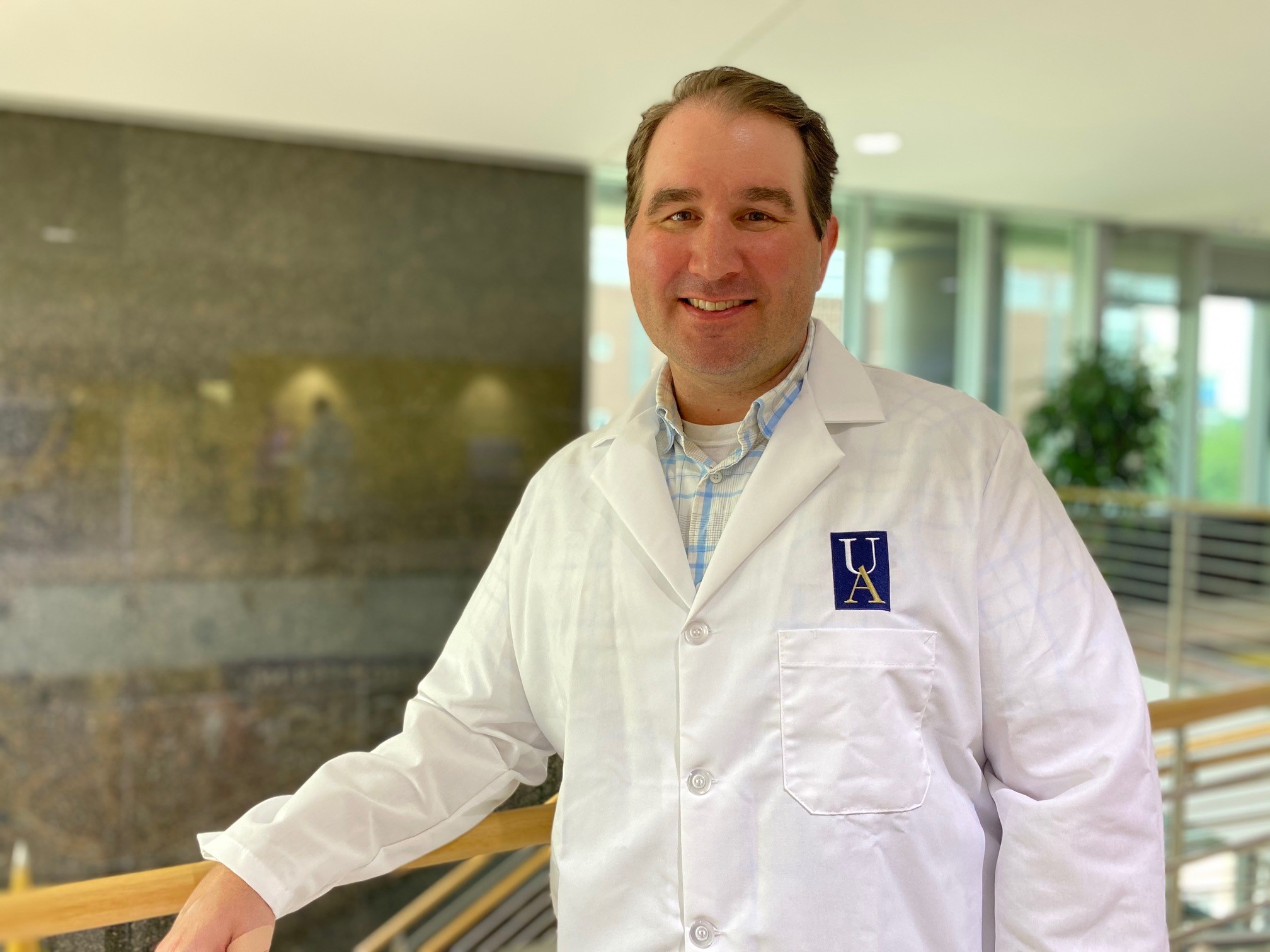Paving the way for spinal cord injury repair and regeneration
Dr. Nic Leipzig, an Associate Professor in the Chemical, Biomolecular, and Corrosion Engineering Department, has been awarded a three-year collaborative research grant from the National Science Foundation to fund his work understanding tissue changes that occur following spinal cord injury. The results of this research will be used to inspire new approaches for repair and regeneration strategies.
The UA portion of the award, totaling $299,999, is part of an ongoing collaboration with Dr. Chandra Kothapalli, an Associate Professor in Chemical and Biomedical Engineering at Cleveland State University. This grant is the latest federally and privately funded grant for Dr. Leipzig and his lab focused on studying and treating spinal cord injuries.

Dr. Nic Leipzig in the Auburn Science and Engineering Center.
“Prior research has mostly ignored the impact that spinal cord injury has on the physical architecture of the tissue itself at small length scales,” says Leipzig. “It excites me that applying these findings could potentially aid in regenerating this important tissue.”
Injury to the spinal cord and the entire central nervous system has profound, long-term physiological consequences due to the tissue’s low innate regenerative ability and formation of scar tissue around the injury site. Dr Leipzig’s team has recently reported that this scar tissue has surprisingly large soft regions, which coincides with its known inhibitive and anti-regenerative nature, however, the underlying basis for these soft areas at the injury site are not clear.
This new grant will allow the team to further explore the physical/structural, cellular, and chemical properties of the spinal cord injury environment. These findings will be used to develop living lab-based microdevices for expanded study and experimentation, while offering new clinical targets for spinal cord regeneration.
Related Content:
